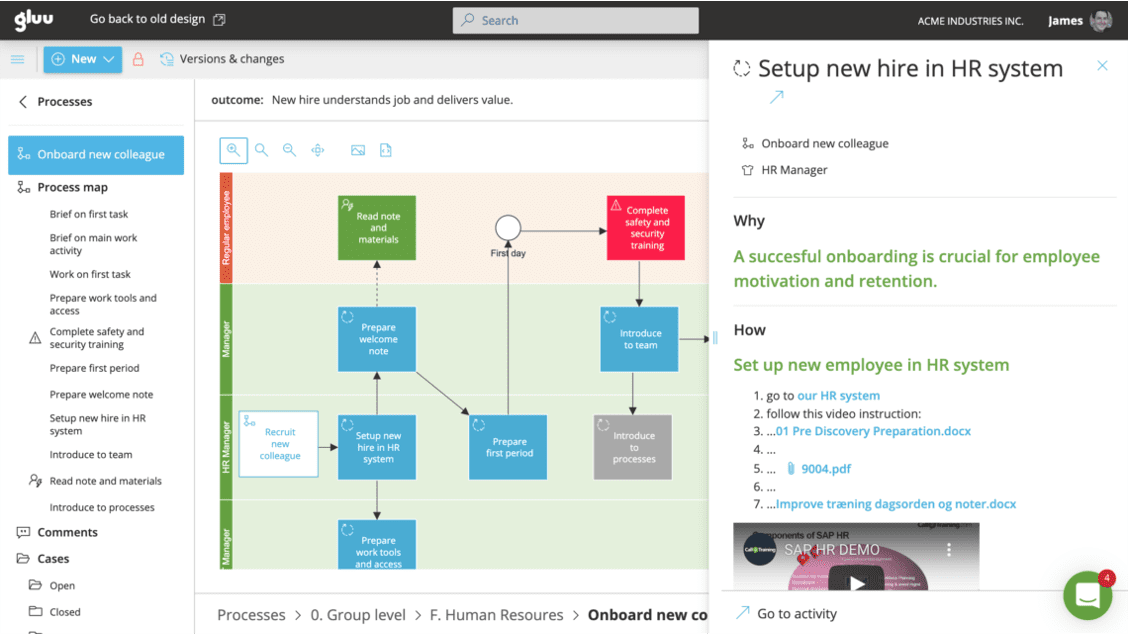
Five barriers to Lean Management

The only lasting competitive advantage for today’s companies is the ability to learn and innovate. While mostly associated with Manufacturing Lean Management has the potential to engage knowledge workers in continuous business improvement. Changing organizations to meet new market demands could hereby become more gradual as organizational competencies develop. The challenge is how you overcome barriers that hinder Lean Management principles when people work remotely.
In this post, we will provide perspectives and recommendations on five barriers to practising Lean Management in international companies.
These barriers exist simply because some basic assumptions for practising Lean are not met. The most fundamental barrier to Lean Management relates to complexity from working with people across time and space.
It’s a question of increasing value chain complexity
In the old days, national companies of multinationals were run as independent subsidiaries with full control over their value chains. Now the value chains of more and more industries are globalizing. Value creation happens in the countries that possess a comparative advantage for each functional activity. Manufacturing is in South East Asia. Customer service is in India and Sales and Marketing are placed in the Western countries where most sales are. Customer preferences are based on national cultures but the underlying business processes span countries and regions.
On top of this, globalisation changes market demands faster than before. Local customer preferences are influenced through contact with people from other countries and through the reading of international media and online reviews.
The consequences of such trends are that business processes, on the one hand, become much more complex and on the other need to develop and adapt to changes more frequently than before. This poses great challenges for individuals who try to improve them by using Lean Management.
A poor setting for developing a Lean culture
A strong and open culture that views errors not as reasons for punishment but as opportunities for learning is a critical condition for practising Lean Management. Another condition is the ability of employees and their managers to share tacit knowledge through observation and close contact when everyday tasks are being completed. These conditions are not placed when business processes span multiple functions and countries. This setting is therefore very far from the Toyota factory floor that gave birth to Lean Management.
“For improvement to flourish it must be carefully cultivated in a rich soil bed (a receptive organization), given constant attention (sustained leadership), assured the right amounts of light (training and support), and water (measurement and data) and protected from damaging.”
Stephen Shortell (Professor of Health Services Management and Organizational Behaviour – Berkeley University, California.)
Five barriers to Lean Management
Lean managers in international companies can create a Lean culture through train-the-trainer methods. Such methods can work for local initiatives where people are co-located. However, Lean Management and Lean cultures run into new barriers when we look at the entire value chain or at business processes that span multiple offices. International companies, therefore, face the following barriers to Lean Management:
BARRIER #1
A typical meeting culture undermines concrete improvements
A significant proportion of our time is spent in meetings. Meetings are not good settings for sharing detailed insights and information. Furthermore, it is very difficult to capture small improvement ideas, when you come across them in your daily work, and then report on these in weekly or monthly meetings. If you do, then you risk being perceived as “someone who is good on detail but lacks overview.”
While tools such as Teams and Zoom are good for collaborating at the same time, they fall short when work hours don’t overlap that much.
How the Gluu platform can help capture improvements regardless of time zone:
- Capture ideas and issues in a work situation – create a comment stream and send ideas or feedback to the right roles.
- Approval tracking – Discuss and approve with no meetings by collecting suggestions.

BARRIER #2
Complexity reduces our ability to see the cause and effect relationships that enable us to learn
When an activity is happening in one part of a business process in one country and its effect is visible in another part in another country, then the person, the team, or the department that undertook the activity often fail to perceive its effect. They, therefore, have no basis for improving, resulting in a lost opportunity for improvement.
Gluu features that support this:
- Map who is responsible for every activity – ensure that complex processes are done the right way across all roles and departments. Furthermore, learn how to delegate work effectively.
- Run process flows as cases – track that end-to-end processes are completed correctly every time.

BARRIER #3
A lack of contextual information crowds out improvement efforts
In the Toyota Production System, workers and managers share knowledge in the right physical context. Machinery and components are placed as close as possible to where they are relevant. They are visually recognizable. This contextual knowledge makes improvement efforts more specific and intuitive. At the same time, people work physically close to one another.
For the knowledge worker that works as part of an international value chain, the setting is normally the opposite. The process is hard to see, information resides in silos with different taxonomies, and colleagues that perform the same work often sit in other locations. Getting work done is hard. Having surplus time and energy to communicate and improve working practices is even harder. The result is that the purpose of Lean Management becomes an ideal that is not realized.
BARRIER #4
Old fashioned practices for collaboration and knowledge sharing
Most organizations are stuck in the old paradigm of copying each other on emails in order to share information. This leads to overflowing inboxes and fatigue when it comes to getting involved and sharing knowledge. Knowledge sharing and collaboration becomes something that prevents you from getting work done, rather than the precondition for getting work done.
Features that support this:
- Standardize how your work is done – organize your systems, files, and instructions around your activities. To learn more about how standard work reduced complexity read our article.

BARRIER #5
Old and complex IT systems
Company ERP, CRM, directory, and knowledge sharing systems are typically designed as “one size fits all”. Business processes are woven in and out of multiple systems. This leads to rigidity and complexity. Many improvement ideas, therefore, stop at the door to the IT department or result in month-long change requests. Being too tied to old IT architectures then paralyses improvement progress.
Features that support this:
- A single workflow – have a single overview of your processes and their performance.
- One-click access to everything that matters – access all information regarding your processes and communicate with your employees with a single page experience.
If you are interested in reading more about Lean Management, have a look at
- the ‘Lean’ category of our blog
- Guide to process improvement tools
This post was originally published on March 30, 2012 and revised on Nov 2, 2020.
👉 Recommendation: We highly recommend this insightful article titled “Five Barriers to Lean Management” on Gluu.biz. It sheds light on the common obstacles businesses may encounter when attempting to adopt lean management structures. The barriers discussed are inadequate communication, insufficient training, resistance to change, lack of consistent leadership, and insufficient planning and resources. These are illustrated in detail, providing a comprehensive understanding of each obstacle. The article also suggests solutions to overcome these challenges, making it a must-read for any business leader interested in implementing lean management strategies.
Conclusion
The article discusses the five most significant barriers to implementing lean management in a company. These include lack of understanding of its principles, resistance to change, inadequate communication, lack of a clear vision, and weak leadership. The post emphasizes that only through understanding these challenges can organizations effectively implement lean management and subsequently streamline workflow, reduce waste, and increase productivity. It also hints at the fact that these hurdles can be overcome with appropriate education, communication, and strong leadership.
Frequently Asked Questions
Organizations can effectively address and overcome the barrier of lack of alignment between departments in implementing lean management through clear communication, establishing common goals, and fostering collaboration among different departments. By involving employees from various departments in the planning and implementation stages, organizations can ensure that everyone is on board and working towards a shared objective. Providing training and education on lean principles to all employees can also help create a common understanding and language across departments.
A great example of an organization that successfully navigated the barrier of resistance to change when adopting lean management practices is Toyota. When Toyota first introduced lean manufacturing principles, there was initial pushback from employees who were accustomed to traditional manufacturing methods. However, through effective communication, engaging employees in the process, and demonstrating the benefits of lean practices, Toyota was able to overcome resistance and create a culture of continuous improvement.
To overcome the barrier of limited resources and budget constraints when trying to implement lean management, organizations can start by prioritizing initiatives that will have the greatest impact on efficiency and waste reduction. By focusing on small, incremental changes and continuously improving processes, organizations can make progress with limited resources. Additionally, seeking out external resources, such as partnering with lean consultants or leveraging free educational resources, can help organizations implement lean practices effectively without a significant financial investment.



